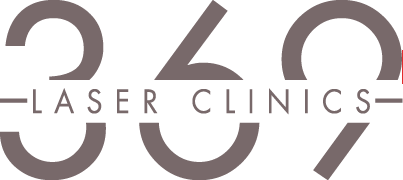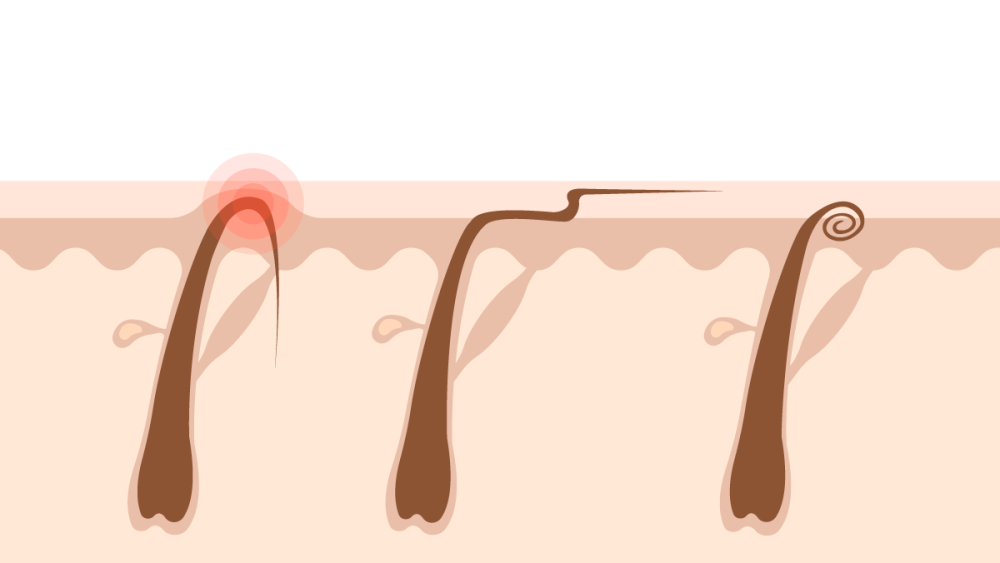The pursuit of smooth, hair-free skin is often hindered by the persistent issue of ingrown hairs. These pesky, often painful, bumps can be a significant source of frustration. However, in the realm of hair removal solutions, laser hair removal emerges as a promising remedy for combating ingrown hairs. In this detailed blog, we will delve into the intricate science behind ingrown hairs and explore why laser hair removal stands out as an effective and proactive approach to addressing this concern.
The Science Behind Ingrown Hairs
Ingrown hairs, scientifically known as pseudofolliculitis barbae or folliculitis, occur when a hair follicle becomes trapped beneath the skin’s surface, leading to inflammation, redness, and discomfort. This phenomenon is particularly common among individuals with curly or coarse hair. Here’s a closer look at what causes these frustrating bumps:
Curved Hair Follicles: The natural curvature of curly or coarse hair can cause it to re-enter the skin after shaving or other hair removal methods. This happens when the hair bends and grows inwards, unable to break through the skin’s surface.
Hair Removal Techniques: Traditional hair removal methods like shaving, waxing, and plucking can create a sharp, uneven hair tip that is more likely to penetrate the skin. This results in an ingrown hair.
Clogged Hair Follicles: Dead skin cells, dirt, and debris can accumulate within hair follicles, blocking the hair’s path to the surface. As the hair grows, it curls back into the skin, causing an ingrown hair.
Friction and Irritation: Constant friction from tight clothing or skin-to-skin contact can cause irritation and push the hair back into the follicle.
Why Laser Hair Removal is a Solution
Laser hair removal offers a revolutionary approach to managing and preventing ingrown hairs. Unlike traditional hair removal methods that cut or pull the hair, laser hair removal targets the hair follicles themselves, leading to reduced hair growth over time. Here’s why it’s a game-changer for ingrown hair prevention:
Precise Targeting: Laser hair removal delivers focused energy to the hair follicles, effectively inhibiting their growth without damaging the surrounding skin. This precision minimizes the chances of hair curling back into the skin.
Long-Term Reduction: While laser hair removal requires multiple sessions for optimal results, the process gradually reduces hair growth. As hair becomes finer and sparser, the likelihood of ingrown hairs significantly diminishes.
Minimized Skin Irritation: Since the need for frequent shaving or waxing is eliminated, the skin has a chance to heal and recover from irritation caused by traditional hair removal methods.
Suitable for Various Skin Types: Modern laser technology has evolved to accommodate a range of skin tones and hair colors, making it accessible to a broader audience.
Professional Guidance: Laser hair removal is performed by trained professionals who can customize the treatment based on your skin and hair type, ensuring the best possible outcomes.
Conclusion
Ingrown hairs can be a persistent obstacle on the path to smooth, flawless skin. Understanding the science behind their occurrence reveals the importance of adopting proactive measures to prevent them. Laser hair removal shines as a solution that offers precision, long-term results, and a reduction in skin irritation. By targeting the hair follicles directly and inhibiting their growth, laser hair removal stands as a beacon of hope for those seeking relief from the cycle of ingrown hairs. Consult with a qualified professional to explore how laser hair removal can revolutionize your approach to hair removal, allowing you to enjoy the confidence and comfort of skin that’s both hair-free and bump-free.



Comments are closed.